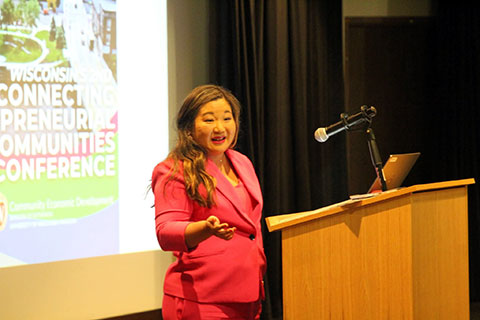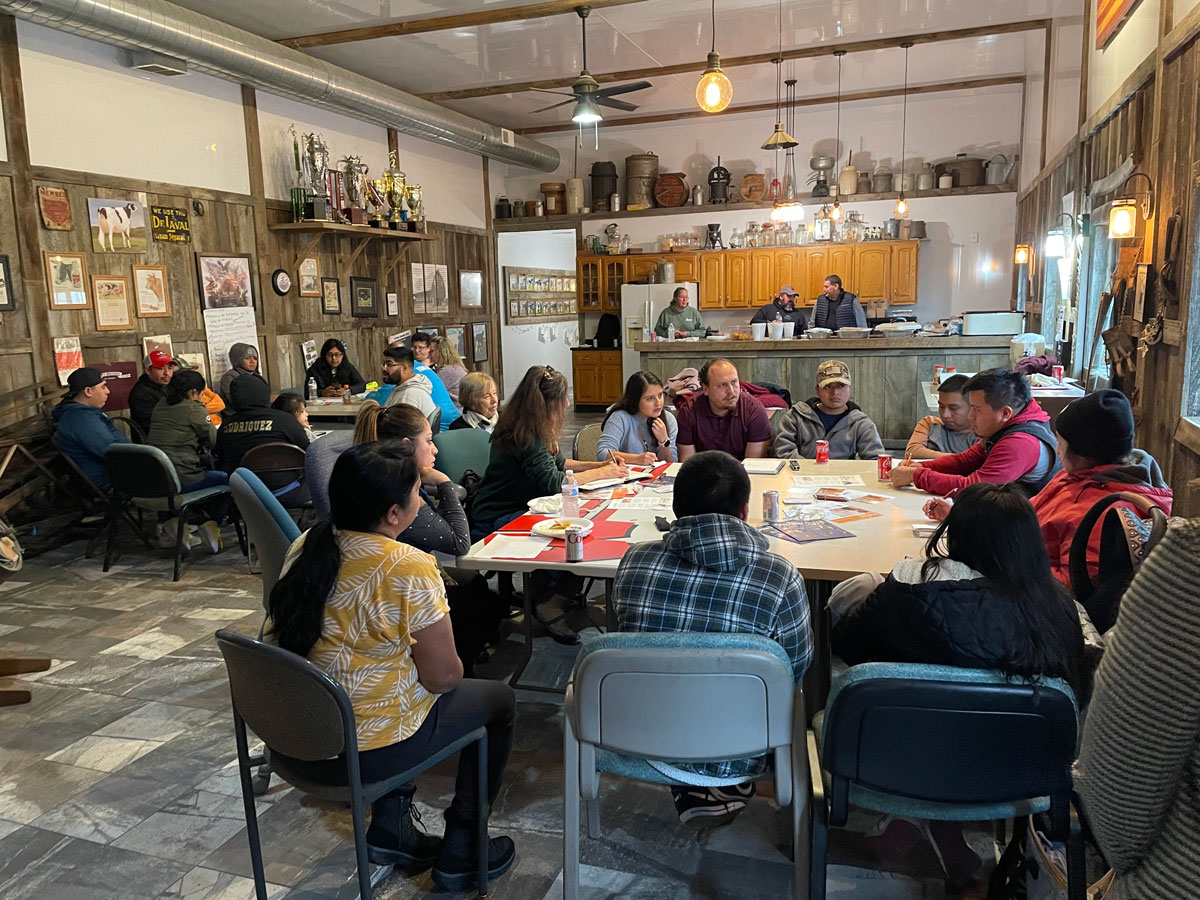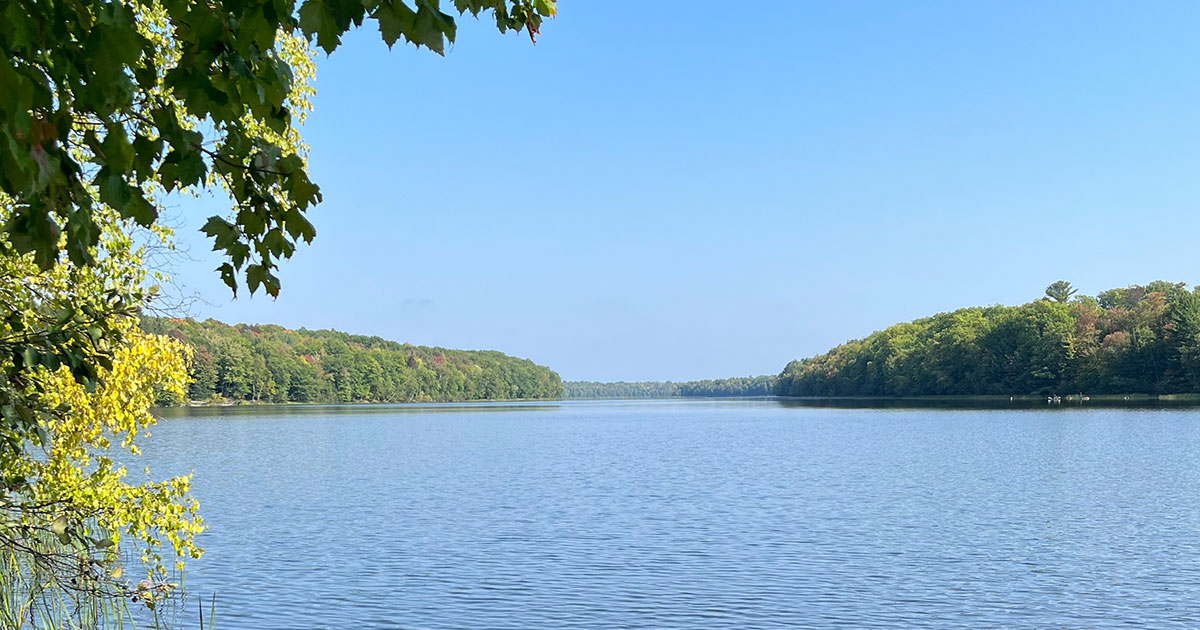Empowering rural entrepreneurship
Statewide CEC conference calls for community involvement
Community, collaboration, and access to capital are the key drivers that have fueled Wisconsin’s economy, Shayna Hetzel, WEDC vice president of entrepreneurship and innovation, told a conference in Wisconsin Rapids.
Those three factors have turned audacious ideas into global corporations, Hetzel said. And they did not emerge from corporate boardrooms, but rather from kitchen tables and garages.

Shayna Hetzel, Vice President, Entrepreneurship and Innovation at WEDC.
For example: Kitchen and bath design leader Kohler got its start in 1883 in Sheboygan when John Michael Kohler applied an enamel coating onto a horse trough and attached four legs, inventing the bathtub. In Milwaukee, pals William Harley and Arthur Davidson, working in a backyard shed in 1903, secured an engine onto a bicycle and launched the legendary motorcycle company, Harley-Davidson.
They were “people who looked at what they had and dared to imagine more,” Hetzel said.
A native of Wisconsin Rapids, Hetzel was the keynote speaker at the opening session of the Connecting Entrepreneurial Communities (CEC), cosponsored by WEDC’s Office of Rural Prosperity, held June 16-18.
Hetzel said ambition, imagination, and invention are evident throughout Wisconsin, from Indigenous entrepreneurs building sustainable forest product economies to biotech startups in Madison.
“It starts with community. Strong communities can foster risk-taking and resilience that encourages more founders to start instead of staying on the sidelines. They offer not just a cheering section, but a safety net.” Hetzel said.
Thrive Rural
One new tool, available through WEDC’s Office of Rural Prosperity, is the Thrive Rural program. The program, which began in 2024, connects local leaders to the resources they need to accomplish projects in areas such as housing community economic development, and sustainable energy projects.
Resources include a community assessment, work plan, fundraising identification, project management, grant-writing consultation, and referrals to consultants and government programs that can provide assistance.
Ten organizations and communities are currently participating in Thrive Rural. For example, in Wood County, a nonprofit community development organization is being established in the city of Pittsville to help expand the area’s outdoor recreation, business development, and housing opportunities. The organization wants to create a multipurpose building that will anchor the downtown and will offer a business incubator and rental space for businesses and housing.
Some of the other Thrive Rural projects involve increasing housing for independent senior citizens in Cornucopia, in Bayfield County; giving a former hospital new life as a commercial development in the town of Phelps, in Vilas County; and advancing the Sawyer County/Lac Courte Oreilles Economic Development Corporation’s plans to develop a business incubator to promote entrepreneurship.
“We are excited about Thrive Rural Wisconsin and the opportunities it offers rural communities to expand economic development,” said ORP Senior Director Beth Haskovec. “The project management support that ORP provides allows projects to move forward more quickly by connecting communities to professional consultants and resources within their region and across the state.”
Investment funding and partnerships
In addition to Thrive Rural, the state’s $100 million Wisconsin Investment Fund , launched by Gov. Tony Evers and WEDC in 2024, already has invested more than $8 million in 12 Wisconsin startup companies, in partnership with five venture capital firms, Hetzel said. The early-stage startups include Amulet, a Madison company with detection products to help people with severe food allergies; Internls, a cleantech company in Wales, Wisconsin that focuses on industrial infrastructure; and Sanacor, a Milwaukee company developing a treatment for chronic heart inflammation.
“We’re backing founders who don’t always get a seat at the table but who expand their local economies with skilled workforce and new technologies,” she said.
Hetzel also said Wisconsin approved agreements this spring for collaborating with Monterrey, Mexico and Hessen, Germany. “These partnerships open pathways for business and investment attraction, market expansion, and innovation exchange,” she said.
Another victory for the state’s innovation economy is the U.S. Economic Development Administration’s $49 million Phase 2 funding, approved in 2024 for the Wisconsin Biohealth Tech Hub which is working to make Wisconsin a global leader in personalized medicine.
Hetzel issued a challenge to conference attendees. “Let’s build bridges together … from rural communities like my hometown of Wisconsin Rapids to urban cities like my home now in Madison. Let’s dream audaciously and act urgently.”
“Let’s set the community table, roll up our sleeves—and build it together with unapologetic ambition in pursuit of an economy for all,” Hetzel said.
This year’s second annual CEC conference drew more than 200 people. 48 of Wisconsin’s 72 counties were represented at the event, in addition to attendees from Minnesota, Illinois, Michigan, and Florida.
Haskovec said the CEC conferences help ensure that rural communities are aware of and have access to resources to support homegrown small businesses—which are often the lifeblood of rural economies.
A Rural Wisconsin Entrepreneurship Initiative grant from WEDC’s ORP funds the CEC conferences. The next one will be held in 2026 in Green Lake.






